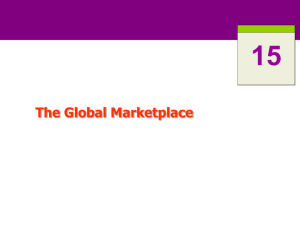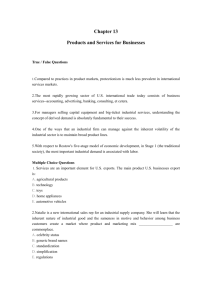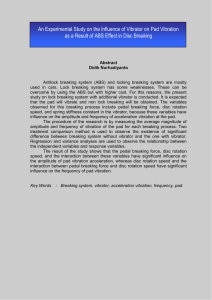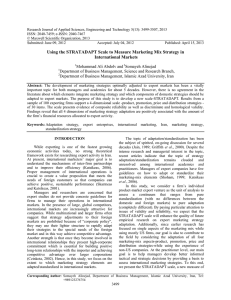International Marketing
advertisement
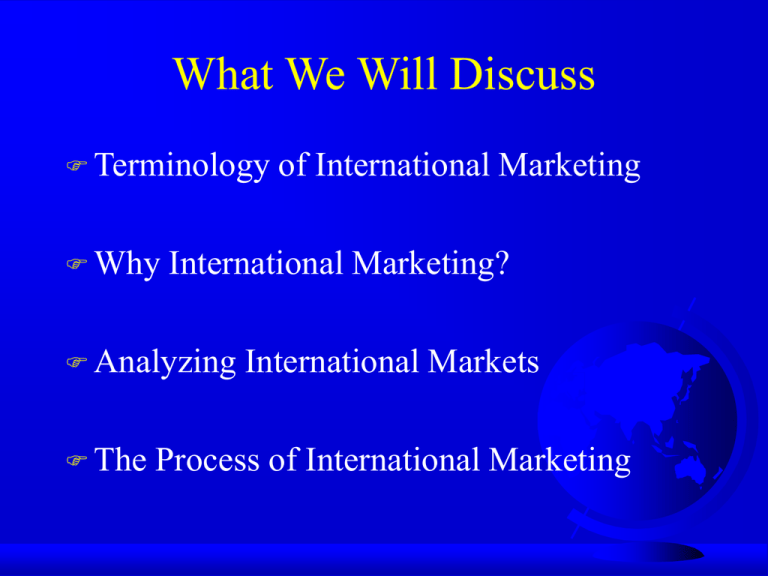
What We Will Discuss Terminology Why International Marketing? Analyzing The of International Marketing International Markets Process of International Marketing Domestic-Orientation Domestic Marketing – aimed at home market – firm faces 1 set of economics, politics & markets Export Marketing – manufactures products in the domestic market – sells products outside of the domestic market International Marketing Direct Involvement Overseas Adaptation Businesses Understand Environments in Which They Operate Global Marketing A Cross-National Economies Elements Strategy of Scale of Standardization Businesses seek to Change the Environments in Which They Operate Major Decisions in International Marketing Look at Global Environment Decide to go International or Not Decide Which Markets to Enter First Decide on Global Marketing Organization Decide on Global Marketing Program Decide How to Enter the Market Looking at the Global Environment 1 Trade Barriers – tariffs – quotas – intangible trade barriers GATT – reduced average tariffs from 45% to 5% Regional Free Trade Zones Looking at the Global Environment 2 Economic Enviroment Political-Legal Cultural Environment Environment What is Culture? Culture Formal Rules – taught directly as right and wrong – awareness of rule – punishment or emotional trauma from breaking rule Culture 2 Technical – – – – Rules taught in a logical manner can be verbalized and reasoned few emotions attached to breaking rule easily changed Informal Rules – picked up by imitation – no awareness of rule – anxiety/exclusion for breaking rule Deciding to Go International Diversity of Tastes in the United States – increased immigration – fragmentation of the middle class Increasing Opportunities Overseas – trade over $1 trillion in U.S. in 1992 A Domestic Market? – ideology of free trade Globalization of Brand Names Deciding Which Markets to Enter Demographic Geographic Economic Factors Factors Factors Technological Sociocultural National Factors Factors Goals and Plans How to Enter the Market Exporting Licensing Contract Joint Manufacturing Venture Manufacturing Direct Investment risk & profit potential The Global Marketing Program Standardization vs. Localization – extension – adaptation: McDonalds - beer or tropical milk shakes? – invention The – – – – Marketing Mix price product promotion distribution Global Organization by product by geography international subsidiaries: sales and profits What We Have Discussed Terminology Why International Marketing? Analyzing The of International Marketing International Markets Process of International Marketing
